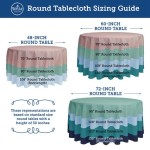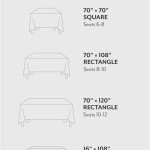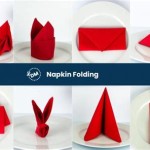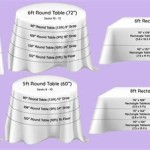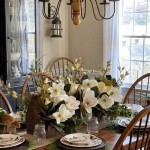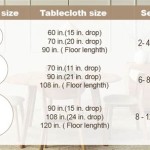How to Build a Garden Table From Scaffold Boards
Constructing a garden table from scaffold boards offers a robust and aesthetically pleasing addition to any outdoor space, embodying both rustic charm and practical functionality. This project provides an opportunity to repurpose materials, contributing to sustainable practices while yielding a bespoke piece of furniture tailored to specific garden dimensions and design preferences. The inherent strength of scaffold boards ensures the table's durability, capable of withstanding outdoor elements and frequent use. This article details the step-by-step process involved in building a garden table using scaffold boards, focusing on material selection, preparation, assembly techniques, and finishing touches.
Before embarking on the project, careful planning is essential. This stage involves determining the desired dimensions of the table, considering the available space in the garden and the intended use. A sketch or a detailed plan outlining the table's length, width, and height is highly recommended. This plan should also specify the arrangement of the scaffold boards for the tabletop and the design of the table legs and supporting frame. Accurate measurements at this stage will minimize errors during construction and ensure a satisfactory final product. Furthermore, it is crucial to account for the thickness of the scaffold boards and any additional materials when calculating the overall dimensions. For example, if the desired table height is 75cm and the tabletop is 5cm thick, the legs should be cut to 70cm. This preparation is vital for ensuring a square and level finished table.
Once the design is finalized, the next phase involves acquiring the necessary materials and tools. Scaffold boards are the primary component, ideally sourced from reputable suppliers who can guarantee the timber's quality and treatment. The number of boards required will depend on the table's dimensions. Additional materials include timber for the table legs and frame, screws, wood glue, and appropriate wood treatment products. Tools needed for this project include a saw (circular saw or hand saw), a drill, a screwdriver, a sander, a measuring tape, a pencil, a square, and safety equipment such as safety glasses and ear protection. Gathering all materials and ensuring the tools are in good working order will streamline the construction process.
Key Point 1: Preparing the Scaffold Boards
Preparing the scaffold boards is a crucial step in ensuring the quality and longevity of the garden table. Used scaffold boards often have rough surfaces, splinters, and may contain residual dirt or debris. This preparation involves several key steps:
Cleaning: Thoroughly clean the scaffold boards to remove any dirt, cement, or other debris. This can be achieved using a stiff brush, a scraper, or even a pressure washer. Ensure the boards are completely dry before proceeding to the next stage.
Sanding: Sanding is essential to smooth the surface of the scaffold boards and remove any splinters. Begin with a coarse-grit sandpaper (e.g., 80-grit) to remove any significant imperfections, followed by medium-grit sandpaper (e.g., 120-grit) to further refine the surface. Finally, use fine-grit sandpaper (e.g., 220-grit) for a smooth finish. Sanding should be done in the direction of the wood grain to avoid scratches. Pay particular attention to the edges of the boards, as these are prone to splintering.
Cutting: Cut the scaffold boards to the required length for the tabletop. Accurate measurements and precise cuts are crucial for a professional-looking finish. Use a circular saw or a hand saw to cut the boards, ensuring a clean and straight cut. If using a circular saw, clamp the board securely to a workbench to prevent movement during cutting. Consider adding a slight overhang to the tabletop if desired, adjusting the cut lengths accordingly.
Jointing (Optional): For a seamless tabletop, consider jointing the edges of the scaffold boards before assembly. This involves using a jointer or a hand plane to create perfectly straight and square edges, allowing the boards to fit together tightly without gaps. While optional, jointing significantly enhances the overall appearance and stability of the tabletop.
Wall Keyword: Achieving a clean and level surface for the garden table is greatly simplified by utilizing a solid wall as a reference point during the assembly process. The wall provides a stable vertical plane, ensuring that the boards are aligned correctly and minimizing the risk of uneven surfaces.
Key Point 2: Constructing the Table Frame and Legs
The table frame and legs provide structural support to the tabletop, ensuring stability and preventing wobbling. The design of the frame and legs can be tailored to suit individual preferences and aesthetic considerations.
Frame Construction: The frame is typically constructed from timber, such as softwood or hardwood, depending on the desired strength and durability. Cut the timber to the required lengths, ensuring that the frame is slightly smaller than the tabletop to allow for an overhang. Assemble the frame using screws and wood glue, ensuring that the corners are square. Reinforce the corners with corner braces for added stability. The frame should be positioned centrally underneath the tabletop, providing support along the entire length and width.
Leg Design: The legs can be designed in various styles, from simple straight legs to more elaborate tapered or splayed legs. The choice of leg design will influence the overall aesthetic of the table. Cut the legs to the required length, ensuring that all four legs are identical in length to prevent wobbling. Attach the legs to the frame using screws and wood glue, ensuring that they are securely fastened. Consider adding additional support braces between the legs and the frame for increased stability.
Attaching the Frame to the Tabletop: Once the frame and legs are assembled, attach them to the underside of the prepared scaffold board tabletop. Use screws to secure the frame to the tabletop, ensuring that the screws are of the appropriate length to penetrate the tabletop but not protrude through the top surface. Distribute the screws evenly along the frame to ensure uniform support. Wood glue can be used in addition to screws for added strength.
Ensuring Stability: After attaching the frame and legs, check the table for stability. If any wobbling is detected, adjust the legs or add shims to level the table. A level table is essential for comfortable use and prevents items from sliding off the surface.
Wall Keyword: When attaching the frame to the tabletop, using a wall as a guide can ensure that the frame is aligned correctly and the resulting structure is square. This simple technique can significantly improve the overall stability and appearance of the table.
Key Point 3: Finishing and Protection
Applying a suitable finish to the garden table is crucial for protecting the wood from the elements and enhancing its aesthetic appeal. The choice of finish will depend on the desired look and the level of protection required.
Sanding (Again): Before applying any finish, give the entire table a final sanding with fine-grit sandpaper to ensure a smooth and even surface. Remove any dust or debris with a tack cloth.
Wood Preservative: Apply a wood preservative to protect the timber from rot, insects, and fungal growth. Choose a preservative that is specifically designed for outdoor use. Apply the preservative according to the manufacturer's instructions, ensuring that all surfaces are thoroughly coated.
Staining (Optional): If desired, apply a wood stain to enhance the natural grain of the wood and add color. Choose a stain that is suitable for outdoor use and complements the surrounding environment. Apply the stain according to the manufacturer's instructions, wiping off any excess stain with a clean cloth.
Sealing: Apply a sealant or varnish to protect the wood from moisture, UV rays, and scratches. Choose a sealant that is specifically designed for outdoor use and provides a durable and weatherproof finish. Apply the sealant according to the manufacturer's instructions, typically requiring multiple coats for optimal protection. Allow each coat to dry completely before applying the next.
Oiling (Alternative): An alternative to sealing is to use a wood oil. Oil penetrates the wood, nourishing and protecting it from within. Wood oils typically provide a more natural-looking finish compared to sealants and varnishes. Apply the oil according to the manufacturer's instructions, wiping off any excess oil with a clean cloth. Regular oiling will be required to maintain the wood's protection and appearance.
Wall Keyword: For long-lasting protection, consider storing the garden table against a wall or under a covered area during periods of inclement weather. This simple measure can significantly prolong the life of the table and minimize the need for frequent refinishing.
By following these steps, a durable and attractive garden table can be constructed from scaffold boards, providing a functional and aesthetically pleasing addition to any outdoor space. The inherent strength of the scaffold boards, combined with careful construction techniques and appropriate finishing, ensures that the table will withstand the elements and provide years of enjoyment.

Thrifty Diy How To Upcycle Scaffolding Boards Into A Garden Table My Life By Cassie Fairy Inspiration For Living Lovely On Budget

What To Do With Reclaimed Scaffold Boards Gilray Plant

Thrifty Diy How To Upcycle Scaffolding Boards Into A Garden Table My Life By Cassie Fairy Inspiration For Living Lovely On Budget

Thrifty Diy How To Upcycle Scaffolding Boards Into A Garden Table My Life By Cassie Fairy Inspiration For Living Lovely On Budget

How To Diy Rustic Garden Benches Using Upcycled Scaffold Boards My Thrifty Life By Cassie Fairy Inspiration For Living A Lovely On Budget

Makeover A Dining Table Made From Scaffold Boards Roses And Rolltops

Thrifty Diy How To Upcycle Scaffolding Boards Into A Garden Table My Life By Cassie Fairy Inspiration For Living Lovely On Budget

How To Make An Industrial Rustic Scaffold Board Dining Table And Bench

Reclaimed Scaffold Board Outdoor Table Top All Sizes

Makeover A Dining Table Made From Scaffold Boards Roses And Rolltops
Related Posts

